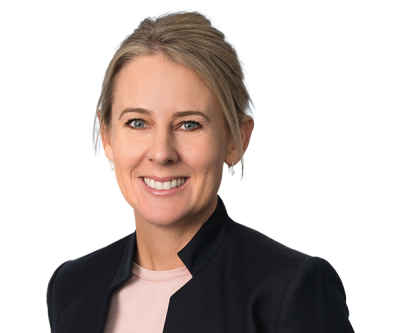
Demystifying digital assets – a guide for trustees
The new and evolving world of digital assets has introduced many private clients not only to vast and often rapid wealth, but also to foreign and increasingly complex concepts. While sophisticated private clients may already be fully educated and ready to capitalise on the tremendous opportunities associated with the rise of digital assets, many trustees and corporate services providers (CSPs) are facing these fast-paced developments with great trepidation.
Contents
- Key terms and phrases
- Why should trustees and CSPs care about digital assets?
- Key Challenges
- The future
For those without prior exposure to the universe of digital assets, it can be impossible to know where to start. Part of the difficulty is the ever-increasing new terminology, acronyms and jargon that can only be grasped with a level of foundational knowledge, but challenges also lie in the fact that digital assets are known to be both volatile and speculative. All of these factors have combined to present scenarios that, to the uninitiated at least, can often appear too complicated to understand and therefore entirely inaccessible.
However, these challenges are not insurmountable. The first step towards tackling them is very simple: trustees and CSPs can benefit greatly by gaining a basic understanding of some of the key phrases and terminology most commonly used in the digital assets space. From there, it is important for trustees and CSPs to consider at a high level how they can best operate in this complex new world with appropriate support from other service providers and sufficient personal protections.
Key terms and phrases
The rate of development in the digital assets world is accelerating on a daily basis; by way of example, an increasing number of global businesses and institutions are announcing that they are now accepting cryptocurrencies for payment, converting bitcoin into a treasury asset, or providing access to digital assets on behalf of their clients. While by no means exhaustive, nor the only way to explain or define these assets or concepts, the list below is a helpful guide to the key terms which trustees and CSPs may increasingly encounter as the world of digital assets continues to evolve:
- digital assets – assets which exist or are stored in digital form. Cryptocurrencies and NFTs (defined below) are the most well-known examples or subsets of digital assets. The terms “digital assets” and “cryptocurrencies” are often used interchangeably.
- blockchain - a distributed ledger recording transactions stored on computers around the world (i.e. distributed) and which is updated simultaneously on all copies of that ledger whenever blocks of transactions are added. This ledger or blockchain avoids the need for a trusted third party such as a bank to verify that a transaction has taken place.
- cryptocurrencies – a broad term used to describe digital assets such as bitcoin and ether, which can be traded for goods and services as well as other cryptocurrencies or traditional fiat currencies (although such trades are not necessarily straightforward). Each cryptocurrency is typically held in a wallet which has a public address (which can be viewed on the relevant blockchain), the ownership and control over which is governed by the possession of a private key associated with that wallet. A bank account is a useful (if not perfect) analogy, where a person has an account number which can be shared but requires a password to make transactions using that account. For a person to send or enter into a transaction involving cryptocurrency held in a wallet, the associated private key is required and should be carefully protected.
- Bitcoin and bitcoin (or BTC) – Bitcoin with a capital ‘B’ refers to the network itself where the transactions are recorded whereas bitcoin with a small ‘b’ refers to the native digital asset which can be transacted on the Bitcoin blockchain.
- Ethereum and Ether (or ETH) – as with Bitcoin/bitcoin, Ethereum is the network and ETH is the native digital asset on the Ethereum blockchain.
- Stablecoins – are cryptocurrencies which attempt to peg their value to some external reference point. The most common stablecoins are pegged to the US dollar (such as USDT and USDC) but stablecoins also exist for other currencies and for gold. Most (but not all) stablecoins currently utilise the ethereum network and for each stablecoin issued or minted, a corresponding amount of the reference is held by the issuer[1].
- Central Bank digital currencies or CBDCs – an extension of stablecoins, CBDCs are in effect a stablecoin issued by a central authority rather than by a private company. By way of example, the Bahamas has issued a CBDC for the Bahamian Dollar, and China is testing a digital yuan.
- NFTs – or non-fungible tokens are unique tokens that are not exchangeable for other tokens in the same way that other fungible tokens (such as bitcoin or dollars) can be exchanged. NFTs have become popular in tokenising art and other media where the ownership of the corresponding token is trackable and tradeable on a Blockchain. The most famous NFT to date was created by the artist known as Beeple and was sold at a Christies auction for US$69m, as discussed in our recent article.
- DeFi – is shorthand for “decentralised finance” and generally refers to financial services such as lending and borrowing which takes place without a central intermediary such as a traditional bank (sometimes referred to as CeFi for centralised finance).
- Staking and Yield farming – staking is a way of earning rewards usually in the form of further tokens by helping a particular blockchain network stay secure, while yield farming describes the process of generating a yield on a particular token or cryptocurrency by temporarily lending it to a DeFi platform in return for (by way of example) a portion of the platform’s fees for providing that liquidity.
- Proof of Work (POW) and Proof of Stake (POS) – describe the two main ways transactions on a blockchain are verified. Without delving into the detail, POW (used by the Bitcoin network and, at least for now, the Ethereum network) uses more energy than POS and therefore has led to criticisms of Bitcoin from an environmental perspective.[2]
Why should trustees and CSPs care about digital assets?
Digital assets are quickly becoming mainstream and the ecosystem and supporting infrastructure around them is rapidly evolving and maturing. As this happens, trustees and CSPs can expect to see more demand from UHNWs and family offices who are looking to gain exposure to this new asset class. By way of example, wealth structuring exercises now more regularly involve settlors asking if new and existing structures can be established to hold digital assets, or may involve conversations around whether the trustee or its delegates will be willing to engage in DeFi activities such as yield farming and staking as part of their mandate. New clients will also be looking to establish structures funded by the proceeds of crypto gains (but not necessarily holding digital assets themselves), which will require the CSP or trustees to have a good understanding of the source of wealth before accepting the proposed mandate.
With all of this in mind, and as has been the case for financial institutions, it is now up to trustees and CSPs to determine how best to adapt and manage their role in this complex new world with relative haste. A basic understanding of the world of digital assets is likely to become increasingly crucial as more and more clients seek advice on and give instructions to establish wealth structures that involve digital assets.
Key Challenges
Trustees and CSPs who are willing to innovate and adapt in order to hold digital assets as part of their structures are likely to be rewarded as this new part of the private wealth space grows. For those who do chose to expand on their service offering in this way, there will be a range of factors to consider before finding a sufficient level of comfort to proceed. In this regard, the three main challenges are likely to be:
- How to deal with the concerns around source of funds and source of wealth from an AML/CFT perspective (which may not seem as straightforward as traditional assets);
- How to manage custody and the risks associated with digital assets (for example, losing the private keys); and
- How to manage the volatility that is currently inherent in most digital assets.
While each of these challenges might on the surface seem problematic, on closer consideration they all present very manageable risks.
Source of wealth/funds
The perceived anonymity of digital assets can lead to some trustees being concerned about establishing a reliable record of the source of wealth and source of funds behind the digital asset. However, the reality is that most digital assets are fully trackable on a blockchain and that it is only the identity of the owner of a wallet that is anonymous. The effect of this is that the movement and history of a digital asset can in fact be verified more completely than many traditional assets where the provenance is assumed rather than verified. There are also service providers who can analyse publicly available blockchain data to confirm, for example, that a particular asset has or hasn’t been used for illicit purposes, giving trustees a high level of comfort. Professional source of wealth audits and reports can also now be produced by qualified CSPs and will undoubtedly become more widely used across the industry as regulation increases. In most cases, prospective settlors will have maintained good records of their digital assets and have no trouble providing satisfactory evidence of source of wealth.
Custody
Many trustees are understandably nervous about being asked to provide custody of digital assets given the risks which might arise if the trustee was to lose the private keys or suffer from some form of technical failure or hacking. However, those concerns can be managed with many private clients using third party institutional grade digital assets custodians (some of which offer full insurance). Using a custodian allows the trustee to be the legal owner of the assets without it needing to personally safeguard them. As the industry grows there are more and more custodians moving into the space and many of the larger banks are now offering custody services.
For settlors who want to avoid using third party custodians, there are a range of alternative solutions including multi-signature wallets (or “multi-sigs”) whereby the private keys are effectively split between multiple parties and a transaction can only be executed with, for example, two or three of the private key holders approving the transaction. These types of arrangements are more complicated but can be set up in a way which minimises risk.
Volatility
Given digital assets can be extremely volatile in terms of their price, trustees will often be concerned about holding these assets in a trust and finding themselves subject to a breach of trust claim by beneficiaries who are unhappy with a loss in value. This is a fair concern, but in practice it can be easily managed through tailored drafting. For example, the trust deed could be drafted so that the settlor holds reserved investment powers, or the digital assets could be owned by a holding company managed by independent directors who are not associated with the trustee. Another option is to specify through express drafting what the trustee should or shouldn’t do in the event a digital asset falls in value by a certain percentage. In our experience, settlors will want to be able to influence trading strategies and are happy for trustees to be fully exonerated for following investment directions issued by the settlor.
Either way, the trust instrument should be tailored so that purchase of or investment in digital assets is expressly permitted and so that related DeFi type activities are authorised. Robust exoneration provisions should be included that clearly recognise the volatility, and cater for losses in value, of digital assets. For this reason, in our view it is better to establish a new trust for the purposes of holding digital assets rather than seek to use or amend an existing trust structure.
The future
Looking to the future, trustees and CSPs can expect, at a minimum, increased uptake in investment in digital assets, more robust supporting infrastructure, better and more expansive regulation globally, and ongoing innovation. As a result, the impact of digital assets on the trusts and private wealth space is likely to be significant well into the future. In the Cayman Islands, this evolution is already well underway with a number of crypto-linked companies and family offices with interests in digital assets now based in or operating from the jurisdiction. Those trustees who are ready and willing to meet these needs will undoubtedly see business boom.
[1] It is worth noting that there have been questions raised as to whether some stablecoins are in fact fully backed.
[2] These criticisms are often uninformed as a very large percentage of Bitcoin miners use renewable energy and are incentivised to do so given the profitability of a mining operation goes up as the cost of energy to run the miner goes down. There are even Bitcoin miners capturing flared natural gas which would otherwise be lost to run miners which has the side effect of improving the environmental impact of those natural gas operations.



